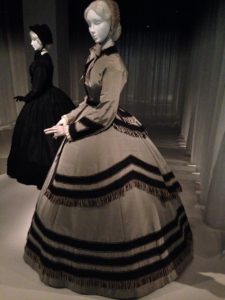 An earlier version of this post appeared on the One Week in Love website.
I grew up knowing that food is love. My mother taught me how to cook. I remember standing in the kitchen on weeknight, following her around as she showed me how to roast a chicken, or bustling around at a dinner party, making a stew stretch to feed an unexpected guest. My father taught me how to bake. He would let me kneed bread dough and roll out pie crusts with my childish hands, making me feel very grown up because this food was actually going to feed people.
An earlier version of this post appeared on the One Week in Love website.
I grew up knowing that food is love. My mother taught me how to cook. I remember standing in the kitchen on weeknight, following her around as she showed me how to roast a chicken, or bustling around at a dinner party, making a stew stretch to feed an unexpected guest. My father taught me how to bake. He would let me kneed bread dough and roll out pie crusts with my childish hands, making me feel very grown up because this food was actually going to feed people.
Later, in college where dorm cafeteria meals are meant to get you through the day rather than satisfy the inner foodie in you, I would cook for my friends. Big pots of spaghetti Bolognese and chicken noodle soup would come steaming off of my dorm’s tiny electric stove. We would pile up mismatched plates and bowls to eat together in the lounge with our eclectic family chosen out of the people we loved best at school.
When I moved to New York for graduate school and then work, I learned to cook in a miniscule New York studio apartment in Morningside Heights with a kitchen that didn’t have an inch of counter space. I’d host little dinner and cocktail parties, feeling very grown up that all of my plates and dishes matched. That I had glassware was seen as a sign of maturity.
Now I cook for my boyfriend, a man doesn’t turn on the stove except to insist on making me a hot breakfast before I head to work. I started cooking for him within a few weeks of us meeting, teaching him little things here and there in the kitchen because he wanted to learn. But more than anything, I wanted to feed him. All my life, I’ve understood that we feed the people we care about because food is about more than sustenance.
Right in the middle of my novella “The Wedding Week”, Chris cooks for Annie. He’s a chef, so I knew it would be important for him to show his love of the heroine through food. It’s his language. I wound up writing a scene I think of as being deceptively intimate. Right in the middle of the book, Chris rolls out of Annie’s bed and makes he tomato soup and grilled cheese sandwiches. But the scene isn’t just about amazing, post-coital food preparation. It’s an early sign of what the reader already suspects: Chris is already falling for Annie.
I’ve gotten a couple of requests from early readers to share Chris’ romantic but simple tomato soup recipe, so here it is. I only hope you will make it for someone you love whether husband, wife, girlfriend, boyfriend, child, parent, or friend.
Tuscan Roasted Tomato Soup
Adapted from 5 Ingredient Fix: Easy, Elegant, and Irresistible Recipes, by Claire Robinson
Ingredients
1 pound vine ripened tomatoes, seeded and quartered*
2 whole garlic cloves, peeled
2 tablespoons olive oil
One 28-ounce can crushed San Marzano tomatoes
1 ½ cups water
1/3 cup basil leaves, chopped finely
Salt & pepper to taste
Preheat over to 400.
Toss chopped, fresh tomatoes with olive oil, salt, and pepper on a rimmed baking sheet. Add whole garlic cloves. Roast in oven for 15 minutes until tomatoes start to shrivel and their sweetness concentrates.
While tomatoes are cooking, add San Marzano tomatoes and water to a large saucepan over medium-high heat. Add basil and stir. Bring to a boil, then reduce head to medium-low and simmer for about 15 minutes.
Once tomatoes are done, remove from oven and reserve garlic cloves. Add to the pot with all cooking juices. Smash garlic with the flat of a knife, and chop finely into a paste. Add to soup. Simmer for another three minutes. Adjust seasonings to taste. Ladle into bowls and serve immediately alongside grilled cheese sandwiches.
This soup freezes well.
*I often make this recipe in the winter when tomatoes are out of season and the greenhouse grown ones are prohibitively expensive. During those months, ripe grape tomatoes sliced in half make a great alternative.
You can order One Week in Hawaii from Amazon, iBooks, Barnes & Noble, and Kobo.
 This Sunday was Marathon Day here in NYC. I, like many New Yorkers, live right near the route. While I love the marathon, sometimes the crowds can get a little rough. This year I cheered on some of the runners earlier in the day and then left the neighborhood to do something I never do. Dear Reader, I went to the Met on a Sunday and took a boatload of photographs.
This Sunday was Marathon Day here in NYC. I, like many New Yorkers, live right near the route. While I love the marathon, sometimes the crowds can get a little rough. This year I cheered on some of the runners earlier in the day and then left the neighborhood to do something I never do. Dear Reader, I went to the Met on a Sunday and took a boatload of photographs.